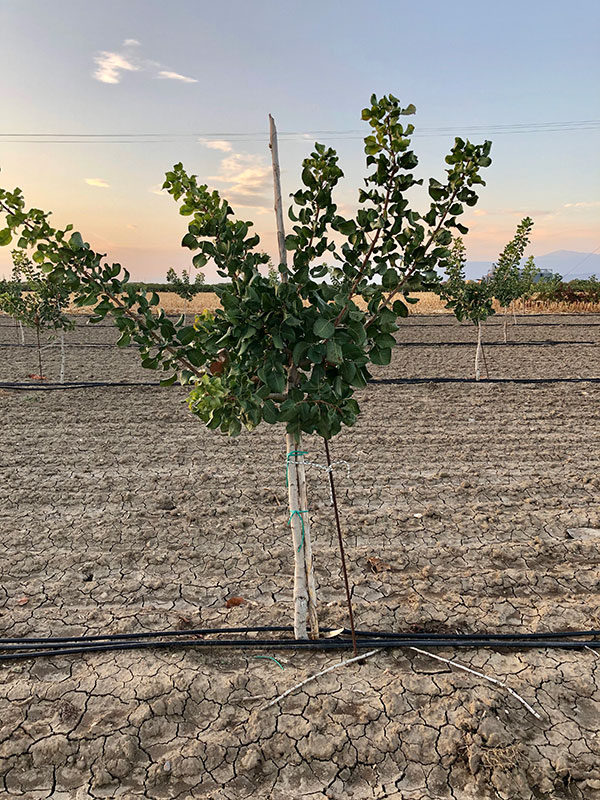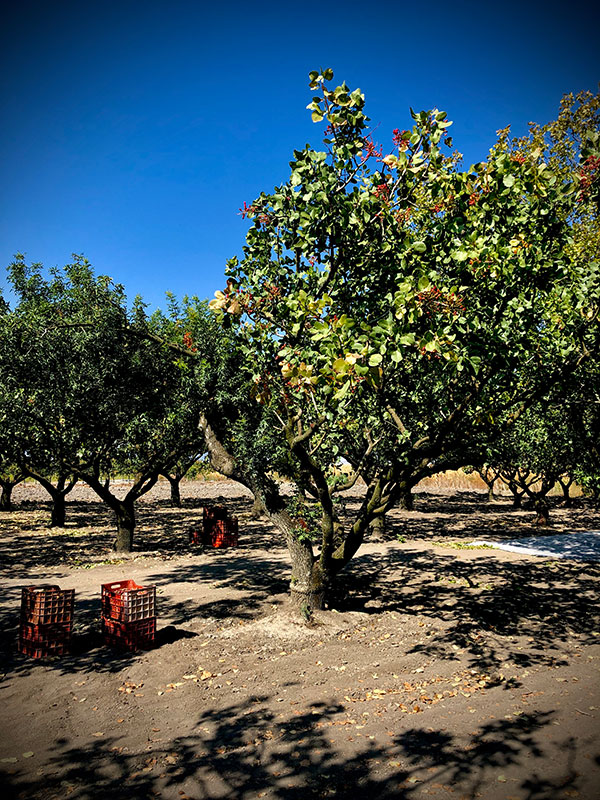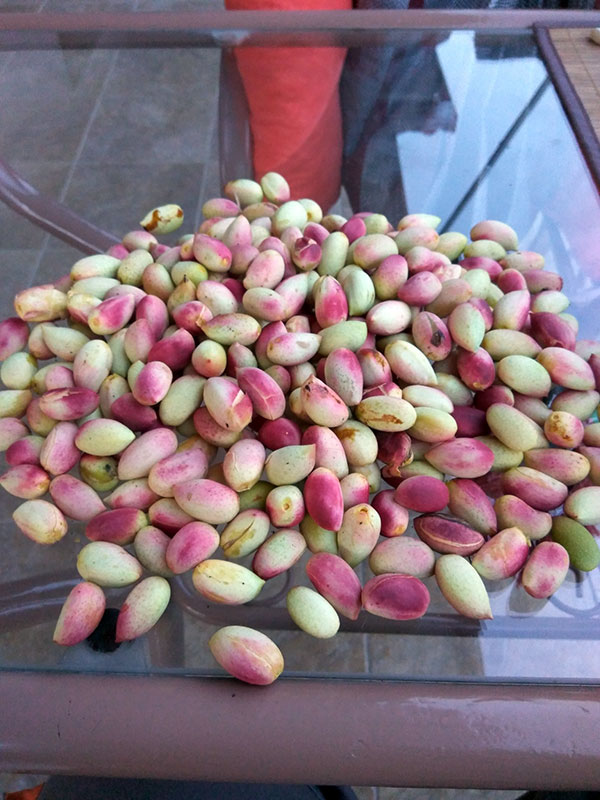
The Fistiki
The fistiki, a member of the cashew family, is a small tree originating from Central Asia and the Middle East. The tree produces seeds that are widely consumed as food.
Pistacia vera often is confused with other species in the genus Pistacia that are also known as pistachio (fistiki). These other species can be distinguished by their geographic distributions (in the wild) and their seeds which are much smaller and have a soft shell.
The tree grows up to 10 m (33 ft) tall. It has deciduous pinnate leaves 10–20 centimeters (4–8 inches) long. The plants are dioecious, with separate male and female trees. The flowers are apetalous and unisexual and borne in panicles.
The seed of the tree is 1-2 cm long and the pericarp is leathery and green in color, while the inner (endocarp) is woody and hard.
When the wrist is matured, it becomes pale, torn, and dropped, leaving the endocarp open which in turn allows the inner crumb to appear. It is green in color and is surrounded by a delicate pink hull (periphery).
Characteristics
Fistikia is a tree that does not withstand much moisture. It grows best in cold and short winters without much rain and long and hot summers. Its roots penetrate deep into the soil and thus are extremely resistant to drought, even more than olive. However, watering is also needed from time to time, especially when the drought is prolonged.
The soil they prefer is sandy with a lot of calcium. Fistiki is multiplied by inoculation and sowing. The fruit is harvested, dried and stored for a short time until planted.
The soil needs enough milling to eliminate weeds to conserve moisture. It needs fertilization mainly with nitrogen fertilizers when the tree is small. The yield of the tree with normal fruiting begins the 4th year after its planting.

Harvest
Today harvesting is done by modern methods, with special electric vibrators shaking the fruit from the trees. Fistikia are then collected, peeled, washed with a special solution, dried and dried in a shady place.
They are then put into a saline solution for a few hours and then bake at 80 degrees until the residual moisture is removed (about half an hour). Then bake again for 40 minutes at 120 degrees. Fistikia are then sorted into open and closed fistikia.
Finally, there is also the possibility of producing fistikia with special machines.
Fistiki Seeds
Fistikia are one of the best quality and most delicious nuts. It is of great nutritional value, rich in biotin, protein and minerals. They are eaten with salt or fresh salt. They are also used in confectionery.
In Greece, one of the best varieties in the world is cultivated, the Aegean with the famous Aegina pistachios. The Nihati variety is cultivated to a lesser degree. Pistachio cultivation in recent years, except Aegina, Salamina and Megara, which were traditionally natural production areas, expanded to Fthiotida, Thessaly, Boeotia and Euboea.
Iran has the largest production in the world. Following the US, Turkey and Syria. Greece is first in Europe and sixth in the world with 9,500 tonnes a year.
(From Wikipedia, the free encyclopedia)
